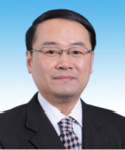| Biography | |
|---|---|
 Prof. Rui Gong Wuhan Institute of Virology, Chinese Academy of Sciences, China |
|
| Title: Development of single domain antibodies against respiratory syncytial virus | |
| Abstract: Respiratory syncytial virus (RSV) poses great health threats to humans. However, there are no licensed vaccines or therapeutic drugs to date. Only one humanized monoclonal antibody, palivizumab, is available on the market, but it is used prophylactically and is limited to infants with high risk. With advances in antibody engineering, it has been found that a single-domain antibody (sdAb) can be therapeutically administered by inhalation, which would be more efficient for respiratory diseases. Here, we identified two human sdAbs, m17 and m35, by phage display technology. They specifically bind to RSV fusion glycoprotein (F protein) in the prefusion state with subnanomolar affinity and potently neutralize both RSV subtypes A and B with 50% inhibitory concentration (IC50) values ranging from pM to nM. Interestingly, these sdAbs recognize a novel epitope, termed VI, that is unique to the prefusion state. This epitope is located at the C terminus of the F1 subunit, close to the viral membrane, and might be sterically restricted. We further find that m17 and m35 neutralize RSV by preventing the prefusion F conformational arrangement, thus inhibiting membrane fusion. These two sdAbs have the potential to be further developed as therapeutic candidates and may also provide novel insight for developing other antiviral reagents against RSV. | |
| Biography: Rui Gong, Ph.D., Head of Antibody Engineering Group, Professor, Ph.D. Supervisor. Dr. Gong graduated from Wuhan University in 2002 and received his Ph.D. also in Wuhan University in 2007. He went to National Cancer Institute, National Institute of Health, USA in 2007 for his training as a postdoctoral fellow, and joined Wuhan Institute of Virology, Chinese Academy of Sciences and established Antibody Engineering Group for antibody engineering-related research in 2012. Dr. Gong won Federal Technology Transfer Award (NIH, USA) in 2011 and 2012. He has about thirty publications and one international patent in application. He is hosting or hosted the grants of the Strategic Priority, Research Program of the Chinese Academy of Sciences, Young Scientist Subject of the National High Technology Research and Development Program of China (863 Project), and National Natural Science Foundation of China, etc. | |
